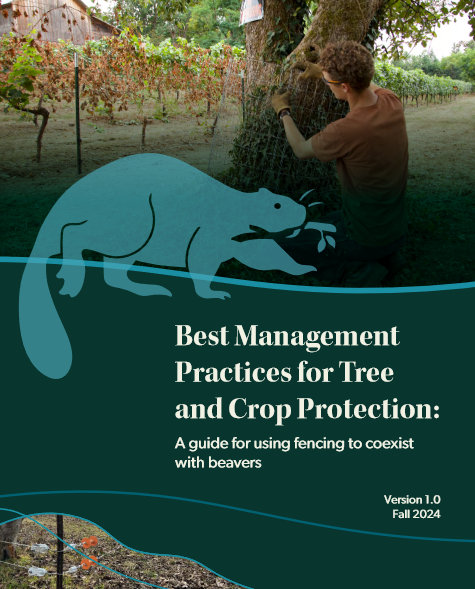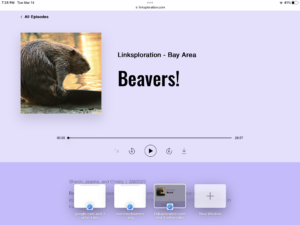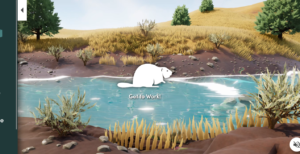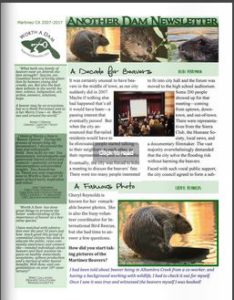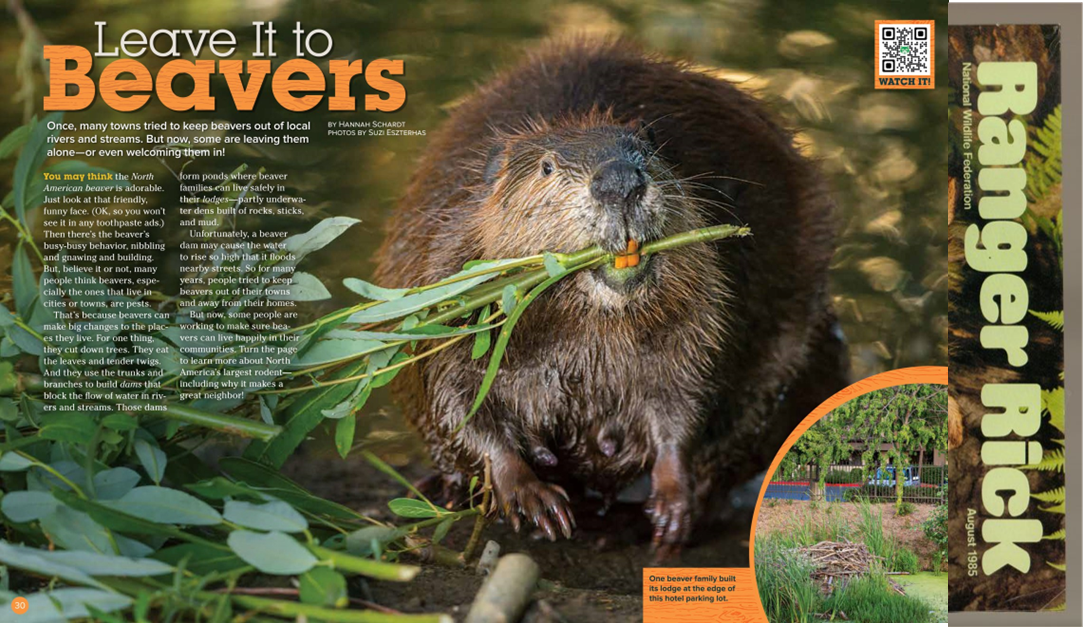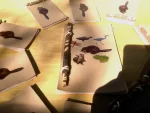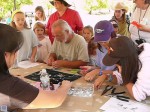Vermont has a complex relationship with wildlife. It is home of some of the most progressive beaver management on the east coast and still gives into its hunters and trappers way more freedom than many folks are comfortable with. This article is a nice look at that complexity, I would love to see similar photos about our history in California. Go look at the photos at least. It’s a walk through that part of history that is surprising to remember.
History Space: Vermont’s great outdoors
The cold night air and departure of colorful leaves are sure signs that another autumn has taken hold in Vermont. This is the time of year when nature has been on full display.
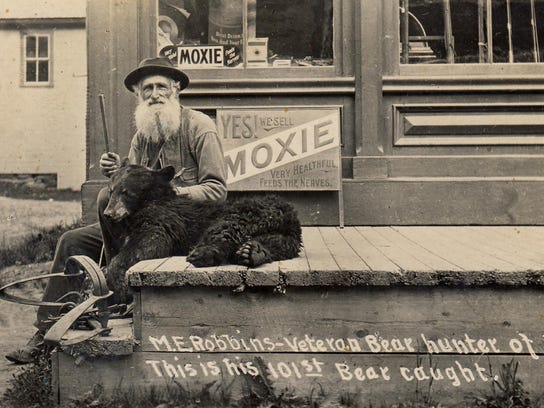 This teeming abundance wasn’t always typical of Vermont. The state’s forested hillsides and landscape flourishing with wildlife represents a relatively recent recovery in the last few decades following centuries of unregulated habitat destruction and species loss. Vermont’s rich wildlife heritage was once in jeopardy of being lost forever, and faces many new challenges today and in the future.
This teeming abundance wasn’t always typical of Vermont. The state’s forested hillsides and landscape flourishing with wildlife represents a relatively recent recovery in the last few decades following centuries of unregulated habitat destruction and species loss. Vermont’s rich wildlife heritage was once in jeopardy of being lost forever, and faces many new challenges today and in the future.
“The search for beaver drove the exploration of New England,” said wildlife biologist Kim Royar, a 35-year veteran with the Vermont Fish & Wildlife Department, who has focused on mid-sized mammals from beavers to bobcats.
“Felted hats made from beaver fur were highly fashionable in London at the time, and centuries of over-harvest of wildlife in Europe as well as destruction of forests and wetlands on the continent had driven beavers and many other species there to the brink of extinction,” Royar said.
Despite an estimated 200 million beavers in North America prior to European settlement, the region’s supply of wildlife was limited. By the 1670s, nearly a quarter million beaver had been shipped from the Connecticut River Valley to London, and fur trappers complained that the species had become scarce in the region. By the turn of the 17th century, beavers were thought to have become completely extinct in what is now Vermont due to unregulated trapping.
 Royar said that the loss of beavers was especially difficult for the many species that rely on the wetlands they create, such as moose, otter, mink, turtles, salamanders, and the waterfowl and songbirds that nest in these wetlands and meadows.
Royar said that the loss of beavers was especially difficult for the many species that rely on the wetlands they create, such as moose, otter, mink, turtles, salamanders, and the waterfowl and songbirds that nest in these wetlands and meadows.
“Beavers are the architects of the landscape, creating a dense network of wetlands used by a wide variety of wildlife,” said Royar. “Once a beaver uses up all the resources around the pond, they move along, allowing the dam to slowly disintegrate and the former pond to transition to grasslands, which creates another stage of incredibly important wildlife habitat. Given that some valley areas of Vermont may have had as many as 300 beaver dams per square mile, the loss of beavers was a devastating blow to the wildlife of Vermont and represented a dramatic change to the state’s landscape.”
It wasn’t just California that was cleaned out of beavers. The decimation of the beaver population happened all over the northern hemisphere and must have left a drier bleaker continent. We just happened to be the last on the list because we were the hardest to get to. It’s stunning to me to think about the individual players all across the united states that started thinking this should be undone at about the same time. Was it the influence of Roosevelt? Emerson? Muir? Or some big inspiring meeting that got everything thinking differently? Fortunately for Vermont, there were some eco-concious players in the 2oth century that made a difference.
Simultaneously, Vermonters were becoming concerned over the continuing destruction of the landscape and streams. The nascent environmental movement, influenced by writers such as Vermonter George Perkins Marsh, as well as Thoreau, Emerson, and Whitman, and conservationists Muir and Roosevelt, spawned the creation of a Board of Fish Commissioners in 1866 to protect brook trout and clean up the waterways. The first game warden force was established in 1904 to protect deer and other game species from overharvest.

During that period, 17 white-tailed deer were brought from New York state in 1878 and stocked in southwestern Vermont. By the 1950s the deer population had exploded in Vermont. Since then, improved game management techniques, including science-based hunting seasons and bag limits, eventually led to a more stable and healthy deer herd
In 1921, biologists from the newly formed Fish and Game Service — a precursor to the modern Fish & Wildlife Department — reintroduced beavers to Vermont. Within two decades, the beaver population had soared to more than 8,000 statewide, building dams and often coming into conflict with people.
“Beavers returned to Vermont after being absent for more than two centuries,” says Royar. “In the meantime, hundreds of thousands of people had moved in, constructing roads and buildings in the valley bottoms and along riverbanks that had previously been beaver habitat. Beavers naturally attempted to reflood these areas, creating a cycle of conflict with people and their property that continues to this day.”
Just imagine for a moment if they had NEVER reintroduced beavers in Vermont. Aside from all the fish and wildlife populations that wouldn’t have recovered, Skip Lisle would never have tried to protect his grandfather’s land with some fence posts and never invented the beaver deceiver! Which means he never would have come to California and the Martinez beavers would have been killed. I wouldn’t have started Worth A Dam and you wouldn’t have been reading this website!
It’s like the entire nation watched what amounted to a “beaver-version” of “It’s a wonderful life” some where in the 1900’s and were rightly terrified by the thought of what the world would look like without beavers. Guardian angels like ‘Terrence’ in every state showed the horrors and then made their recovery possible. And all of America suddenly ‘woke up’ as if from a beaverless dream. Somewhere there is a list of reasons WHY beavers introduced beavers in 1921 that I would like to see. It probably describes fish habitat, water storage and wildlife populations and represents all the hard-won jewels of wisdom we forgot over the years.
I think reintroducing beavers is like having children. You have to do it fast while you’re young and foolish. If you wait until you’re smart enough to know all the disadvantages and things that could go wrong it will probably never happen.


 Having successfully ended a dynasty, unseating longtime incumbent Kirk Robinson and claiming the Commissioner Position 5 of the board for the Bainbridge Island Metropolitan Park & Recreation District, Michael Pollock’s celebration was much less involved than his campaign.
Having successfully ended a dynasty, unseating longtime incumbent Kirk Robinson and claiming the Commissioner Position 5 of the board for the Bainbridge Island Metropolitan Park & Recreation District, Michael Pollock’s celebration was much less involved than his campaign.
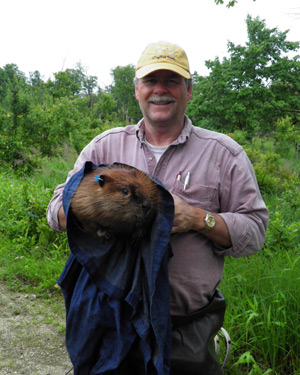

 This month’s moon is called the beaver moon, and it was full Saturday.
This month’s moon is called the beaver moon, and it was full Saturday.







